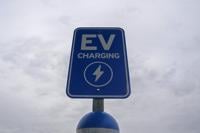KRIEGERS FLAK OFFSHORE WIND FARM, Denmark (AP) — In a small boat bobbing in the waves between towering offshore wind turbines, researchers in Europe’s Baltic Sea reach into the frigid water and remove long lines stretched between the pylons onto which mussels and seaweed are growing.
It’s part of efforts to explore multiple uses for remote wind parks far out at sea, such as fresh seafood production.
Run by the Swedish state-owned power firm Vattenfall and Denmark’s Aarhus University, the four-year project started in 2023 off the Danish east coast at Scandinavia’s largest wind farm, . With its first harvest just 18 months later, it's already showing signs of early success.
“There’s an increasing competition for space on land and in the sea," said Aarhus University senior scientist Annette Bruhn, who leads the project. “We can, in one area, produce both fossil-free energy and food for a growing population.”
With a capacity of over 600 megawatts, Kriegers Flak can power up to 600,000 households. Its 72 turbines deliver clean energy to nearby Denmark and Germany to the south.
But researchers saw other potential within the park’s 132 square-kilometer (51 square-mile) area.
The water between its spinning blades has been transformed into an experimental underwater seafood farm.
Four hundred-meter (328-foot) lines spread between the turbines grow seaweed and mussel crops. The seaweed was recently harvested for the first time.
“Seaweed and mussels are low trophic aquaculture crops, which means that they can be produced without the use of fertilizers. They take up nutrients from the sea and produce healthy foods,” Bruhn said.
Recent Aarhus University modeling suggests tons of fresh seafood could be produced annually by utilizing just a tenth of Denmark’s wind park area. Researchers say the benefits could go well beyond food production — mussel and seaweed crops could help improve water quality and capture carbon.
“These are non-fed crops that live from what they take up from the sea, they capture emissions instead of having emissions," Bruhn said.
Researchers say now is the time to develop guidelines to encourage companies to plan for multiple uses of the ocean as European nations massively ramp up production of from wind turbines in the North Sea.
In 1991, Denmark became the first country in the world to install a commercial offshore wind park. More than 30 years later, nearly half of the Danish electricity production derives from wind turbines.
Driven to meet climate targets and reduce energy dependence on Russia, nine European countries, including Denmark, last year announced plans by the end of the decade, and move to 300 gigawatts by 2050.
Vattenfall bioscience expert Tim Wilms said there’s “huge potential."
“We have so much untapped area within our turbines that is not being used,” he said.
“In some areas, it makes a lot of sense to combine with sustainable food" while in other areas "we might look into offshore solar.”
A growing body of research shows that offshore wind farms can have both positive and negative impacts on local ecosystems.
Offshore projects have been criticized for damage caused to the sea floor during construction, noise pollution and now .
Meanwhile, the large boulders laid at the base of the turbines to prevent erosion can also act as artificial reefs attracting more marine life and protect from large-scale fishing operations.
Wilms said underwater surveys of older wind farms revealed structures “completely transformed”, overgrown with different species.
Liselotte Hohwy Stokholm, CEO of Danish think tank Ocean Institute, said more “knowledge about multi-use” developments was needed to understand how to combine human activities so that great areas of the ocean could become “strictly protected areas.”
Currently, efforts are on a limited scale, but researchers hope to soon take their knowledge to the extreme conditions of the North Sea, eventually upscaling to commercial food production.
“It’s very vital that we do it now because there’s so many questions we still need to have answered before we can do this in the right way,” said Bruhn.
____
Follow AP’s climate coverage at:








































